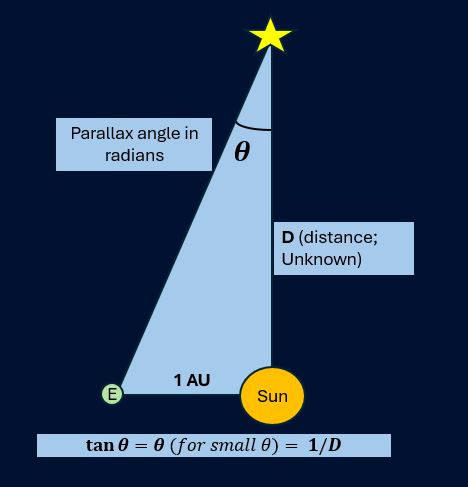The Mathematical Foundations of Astronomy
- Pranav Siddineni
- Jul 28
- 4 min read
Updated: Nov 7

Mathematics is the essential tool used to understand and describe celestial phenomena and the cosmic laws that govern our universe!
Ancient civilizations in Babylonia and Greece used math to track planetary movements and predict eclipses. In the 2nd century, Ptolemy used geometry extensively to map out the orbits of planets in his geocentric (earth-centered) model. This model was accepted for over 1400 years!
Then, in the 16th century, Copernicus revolutionized astronomy with his heliocentric (sun-centered) model, again using geometry. This model was later perfected by Kepler, with his brilliant laws of planetary motion that involved precise mathematical equations. Newton provided the explanation for these laws in the 17th century with his law of universal gravitation, showcasing the power of math to explain the gravitational forces between celestial bodies.
Today, advanced math concepts like calculus and differential equations are the backbone of modern astrophysics, empowering scientists to delve into the awe-inspiring complexities of the universe. Let's dive into the details of a few key ways in which math is used in astronomy today!
The Light-Year

A light year is an incredible measure of distance that shows just how vast our universe really is. It represents the distance that light travels in one year, which is about 5.88 trillion miles, or roughly 9.46 trillion kilometers. Imagine that — light, the fastest thing in the universe, zooming across the cosmos at an astonishing speed of approximately 186,282 miles per second!
The sun is approximately 93 million miles from the earth, so its light takes about 8 minutes and 20 seconds to reach Earth! (This distance is known as an Astronomical Unit (AU), which is a standard measure used in astronomy to describe distances within our solar system.) The star nearest to us, Proxima Centauri, is located about 4.24 light-years, or 25 trillion miles, away. To put this in perspective, walking to Proxima Centauri would take us 950 million years!
Parallax — The Celestial Eye Test

As we just saw, distances in the universe are unimaginably vast; they are too far to send a spacecraft, but astronomers use a mathematical trick, called parallax, to calculate such faraway distances.
You can discover the concept of parallax right now by holding your finger out in front of your face and closing one eye. Look at where your finger is in relation to objects in the background. Now open the other eye, and close the first. Your finger appears to move against the more distant objects, even though you haven’t moved it. This is parallax!
You can experiment further by moving your finger to different distances in front of your face and blinking from eye to eye. You will see that your finger appears to move a greater distance when it is closer to your face than when it is farther away.
Let’s use the orbit of the earth around the sun as an example in astronomy. Every 6 months, the earth moves halfway around its orbit and presents a different vantage point for observing a star, the equivalent of blinking between two eyes. In this case, the star appears to move from side to side against the backdrop of more distant stars.
By measuring the amount of displacement – the parallax angle – and knowing the distance between the sun and the earth ("E" in the diagram below), astronomers can determine the star’s distance using simple trigonometry:

Predicting an Eclipse

A solar eclipse happens when the moon glides right between the earth and the sun, casting a shadow and blocking some or all of the sun's brilliant light. A lunar eclipse happens when the moon moves into the earth's shadow, preventing sunlight from reaching it and causing it to appear darkened. The key to predicting these celestial events lies in the intricate dance of the earth and moon as they orbit and align in space!
The earth follows an elliptical path around the sun, taking about 365.25 days to complete its journey. Meanwhile, the moon orbits the earth in its own elliptical path, finishing a full lap every 27.3 days. Now, the moon's orbit is tilted by about 5 degrees relative to the earth's orbital plane (called the ecliptic plane), and this tilt is key to determining when eclipses take place. There are the special points on the moon's orbit called nodes, where the moon's path crosses the ecliptic plane. Eclipses can only happen when the sun is close to one of these nodes during a new moon for a solar eclipse or a full moon for a lunar eclipse.

Credit: ASA Eclipse
Now, how are eclipses actually predicted?
The Saros cycle, discovered by the Babylonians, is an interesting 18-year, 11-day, and 8-hour cycle that allows us to predict eclipses. After this time, the sun, earth, and moon return to roughly the same relative geometry, causing eclipses to repeat (though in a different geographic location). Talk about cosmic timing!
Modern methods use a blend of celestial mechanics, geometry, and mathematical modeling to calculate the positions of the earth and the moon, allowing us to predict the timing and path of upcoming eclipses with remarkable accuracy!



Comments